1. Lake Michigan Stonehenge (Michigan)

In 2007, sonar scans of Lake Michigan revealed an unexpected mystery: a circle of massive stones lying 40 feet below the surface. Resembling Stonehenge, the formation includes one rock carved with what appears to be a mastodon—a creature that went extinct over 10,000 years ago. Researchers, including archaeologists and geologists, believe this discovery could predate any known civilization in the region.
What baffles experts is whether the stones were arranged by humans or shaped naturally. If man-made, their purpose remains unknown: could they be ceremonial, astronomical, or something else entirely? Adding to the intrigue, the site’s exact location has been kept secret to prevent tampering, leaving its full story submerged in secrecy. For now, this prehistoric puzzle offers more questions than answers, deepening the allure of Lake Michigan’s hidden depths.
2. The Monitor Shipwreck (North Carolina)
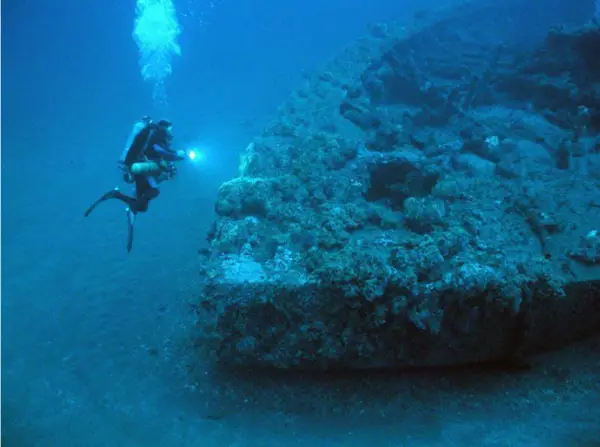
In 1973, the wreck of the USS Monitor was discovered 240 feet beneath the Graveyard of the Atlantic, off the coast of North Carolina. This Civil War ironclad sank in a storm in 1862, just months after its historic battle with the CSS Virginia. Researchers, led by NOAA, have recovered artifacts including cannons, tools, and personal belongings, but much of the wreck remains unexplored due to its fragile state.
The Monitor’s sinking continues to perplex scientists. Why did the ironclad succumb to the storm when similar vessels survived harsher conditions? Advanced imaging has revealed structural weaknesses, but other secrets about its revolutionary design and final hours remain locked within its rusting frame. Now a marine sanctuary, the Monitor draws both historians and explorers, standing as a testament to innovation and the sea’s enduring mysteries.
3. Blackbeard’s Queen Anne’s Revenge (North Carolina)
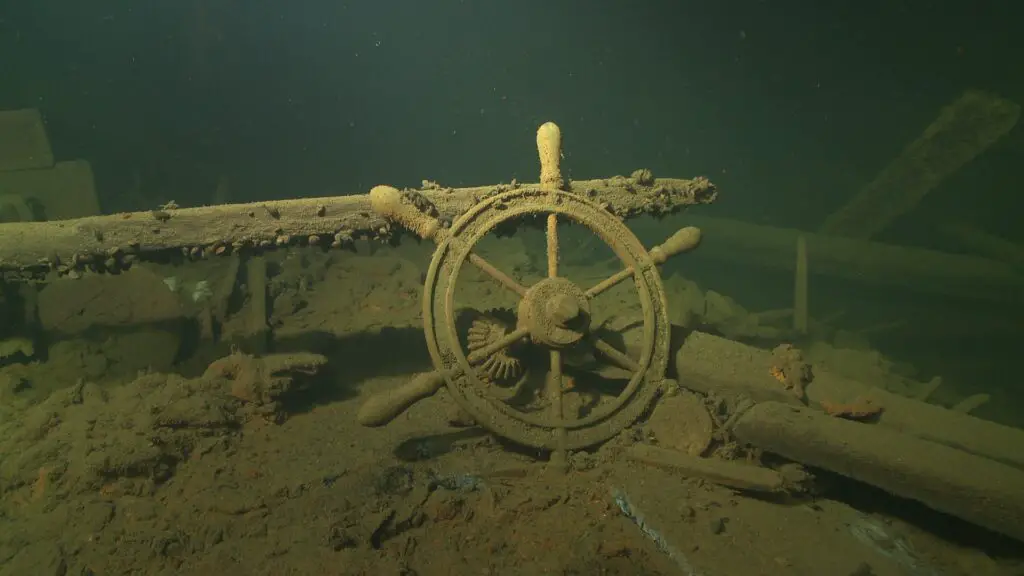
Discovered in 1996 near Beaufort, North Carolina, the Queen Anne’s Revenge has become one of the most studied pirate shipwrecks in history. Once the flagship of the infamous Blackbeard, the vessel sank in 1718 under circumstances that remain murky. Researchers from the North Carolina Department of Natural and Cultural Resources have recovered thousands of artifacts, including cannons, gold dust, and even apothecary tools.
What keeps scientists intrigued is the ship’s role in Blackbeard’s legacy. Did he intentionally run it aground to abandon his crew and keep the spoils for himself? And are there undiscovered artifacts or treasure still hidden in its depths? Despite years of study, the Queen Anne’s Revenge continues to guard its secrets, keeping the life of one of history’s most infamous pirates shrouded in mystery.
4. The Golden Orb (Gulf of Alaska)
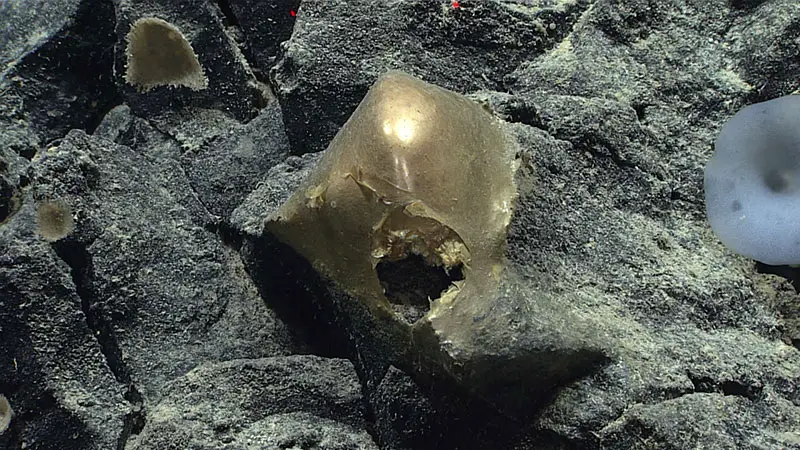
In 2023, scientists aboard NOAA’s Okeanos Explorer made a discovery that left them stunned. Nearly 2.5 miles beneath the Gulf of Alaska’s frigid waters, a remotely operated vehicle captured images of a golden orb nestled on the seafloor. About the size of a baseball, this shimmering, fragile object seemed biological yet alien in appearance. One scientist described the moment as “beyond exciting,” while others marveled at its strange, skin-like texture and a small tear that seemed to suggest it had once housed something alive.
Early analysis confirmed the orb is biological, but its exact origins remain unknown. Was it an egg sac, a new species, or something entirely unprecedented? Found in one of the most remote and unexplored parts of the ocean, the orb has left researchers mystified, highlighting how much we have yet to uncover in the abyss. It stands as a reminder of the deep ocean’s enduring mysteries, waiting to be solved.
5. The Baltic Sea Anomaly
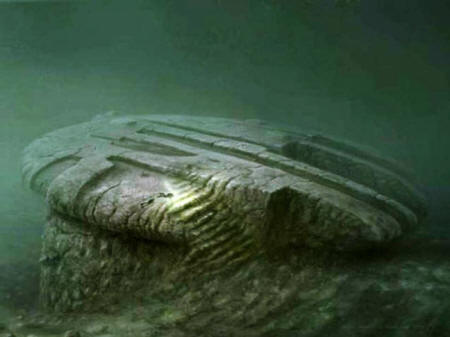
In 2011, a treasure-hunting team called Ocean X made a discovery that continues to baffle scientists and enthusiasts alike. Resting 300 feet below the surface of the Baltic Sea lies a massive, circular structure spanning 200 feet in diameter. With its sharp edges and peculiar features, including what appear to be ramps and staircases, the anomaly has sparked wild speculation. Some believe it to be a UFO crash site or the remnants of an ancient civilization, while others suggest a natural formation shaped by glacial activity.
What deepens the mystery are the strange malfunctions reported by divers. Electrical equipment fails when approaching the site, adding to the sense of the unknown. Samples taken from the formation reveal unusual mineral compositions not typically found in the area, further confusing researchers. Whether a geological oddity or evidence of something more extraordinary, the Baltic Sea Anomaly remains one of the ocean’s most puzzling enigmas.
6. Yonaguni Monument (Japan)
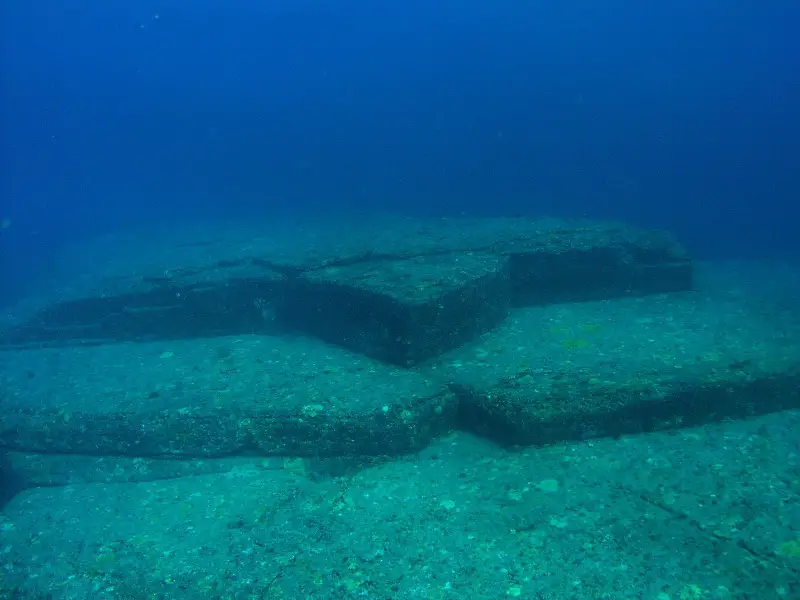
Off the coast of Yonaguni Island in Japan lies an underwater enigma that has puzzled researchers since its discovery in 1986 by local diver Kihachiro Aratake. Known as the Yonaguni Monument, this massive stone formation stretches 490 feet long and plunges to depths of 82 feet. Its sharp, angular terraces, steps, and pyramid-like structures seem deliberately carved, sparking theories that it could be the remnants of an ancient civilization dating back over 10,000 years. Marine geologist Dr. Masaaki Kimura believes it may be the lost Pacific continent of Mu, pointing to what he claims are carvings of animals and faces as evidence of human craftsmanship.
Skeptics argue the structure is a natural result of tectonic activity and erosion, but sonar scans and dives have revealed what some interpret as tunnels, platforms, and even a stone altar. Adding to the intrigue, local legends tell of an ancient kingdom swallowed by the sea. Whether a natural phenomenon or the ruins of a forgotten society, the Yonaguni Monument stands as one of the ocean’s most compelling mysteries, challenging our understanding of history.
7. The Bloop Sound
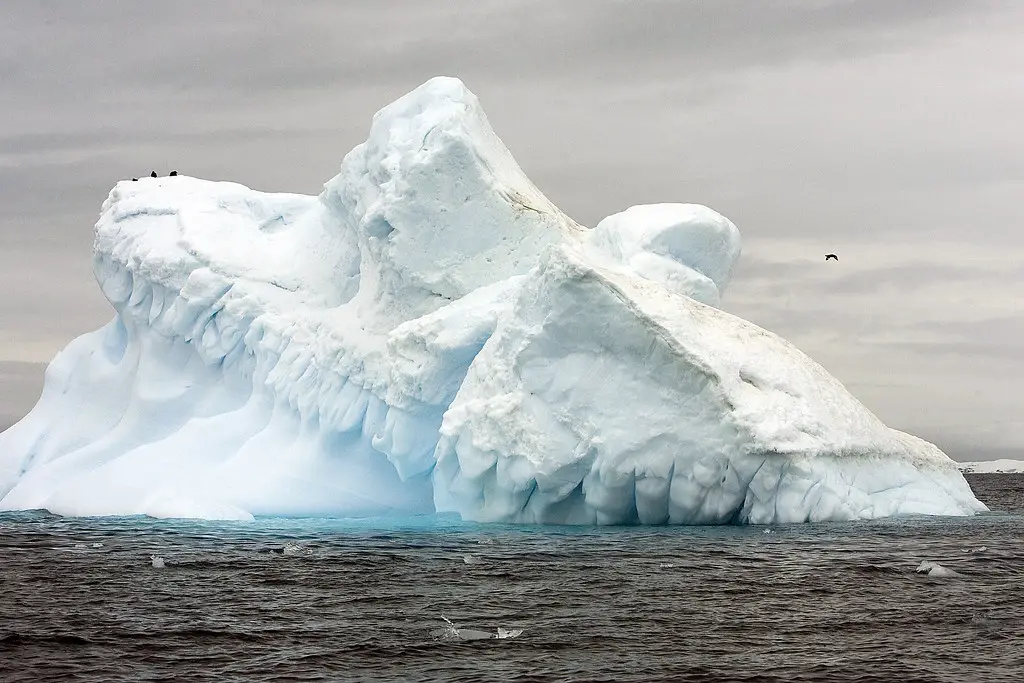
In 1997, NOAA’s underwater listening devices detected a sound so loud it was heard over 3,000 miles of ocean. Dubbed “The Bloop,” this low-frequency noise was initially thought to originate from a massive sea creature, sparking wild theories of unknown leviathans lurking in the depths. Its organic-sounding qualities baffled scientists, who struggled to identify any known marine source capable of producing such power.
Later research suggested The Bloop might have been caused by icequakes—massive icebergs cracking and shifting underwater. Yet, the lack of similar recordings since 1997 leaves some skeptical of this explanation. Whether geological or biological, The Bloop remains one of the most mysterious sounds ever recorded, a haunting reminder of the vast, uncharted world that lies beneath the ocean’s surface.
8. Pavlopetri, Greece

Beneath the sparkling waters of southern Greece lies Pavlopetri, a 5,000-year-old city that holds the title of the world’s oldest submerged settlement. Discovered in 1967 by oceanographer Nicholas Flemming, Pavlopetri is an archaeological marvel. Its remarkably preserved layout includes streets, courtyards, and buildings, suggesting an advanced Bronze Age civilization. In 2009, researchers from the University of Nottingham created a 3D reconstruction of the site, revealing complex two-story homes and drainage systems.
What led to Pavlopetri’s submersion remains unclear. Rising sea levels during the Bronze Age or a catastrophic event could have sealed its fate. The site’s preservation defies the usual effects of time and ocean currents, making it an invaluable window into ancient urban life. Yet, its ultimate demise remains shrouded in mystery, leaving scientists to wonder what other stories lie buried beneath the waves.
9. Atlit Yam, Israel
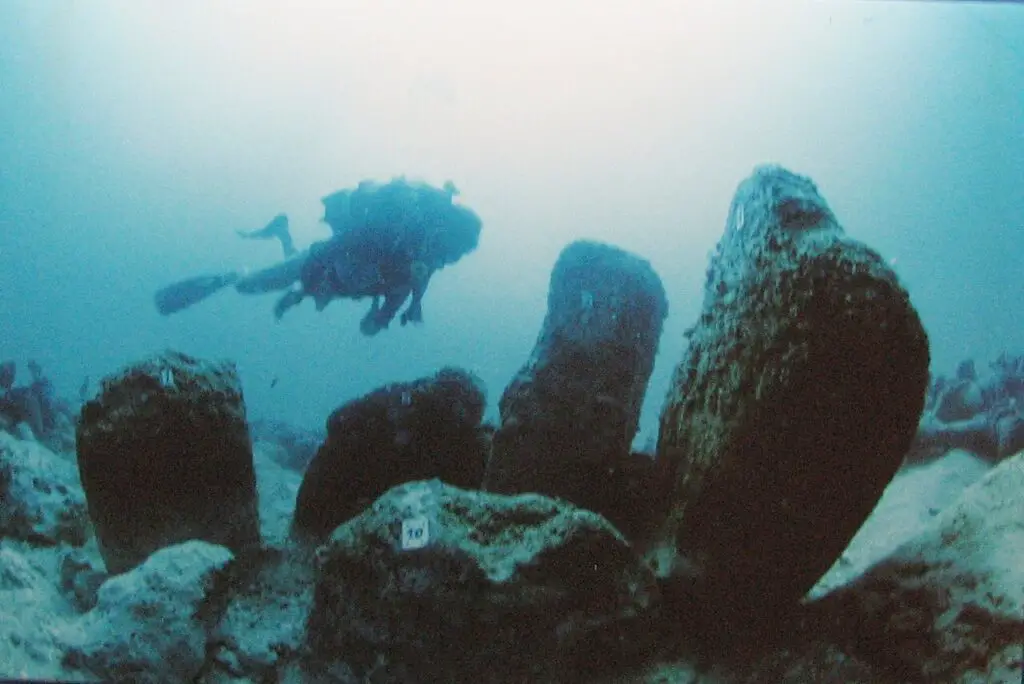
Beneath the Mediterranean waters off the coast of Israel lies Atlit Yam, a Neolithic village submerged for more than 8,000 years. Discovered in 1984 by marine archaeologist Ehud Galili, this remarkable site spans over 10 acres and is one of the best-preserved underwater settlements in the world. Within its boundaries, researchers have uncovered stone houses, freshwater wells, and a ritual site marked by seven massive limestone monoliths arranged in a semicircle. These findings point to a society with advanced agricultural and fishing techniques.
Despite its preservation, the site hides unsettling secrets. The remains of a family discovered in a mass grave revealed the earliest evidence of tuberculosis in human history. Scholars debate whether the village was abandoned due to rising sea levels or a catastrophic event such as a tsunami. With each artifact unearthed, Atlit Yam offers a deeper glimpse into the lives of its inhabitants while keeping the cause of its submersion shrouded in mystery.
10. Lake Baikal Ice Circles (Russia)
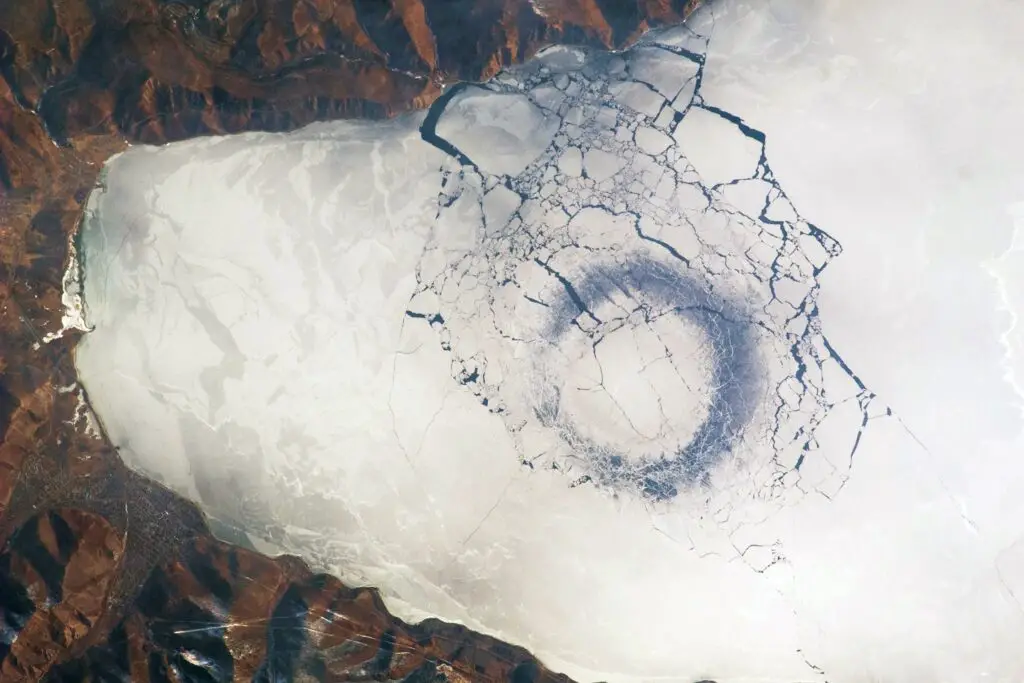
In Siberia, the world’s deepest freshwater lake holds a cold and mysterious secret: massive, perfectly circular ice patterns that appear each winter. First observed by astronauts aboard the International Space Station in 2009, these rings measure up to 4.4 miles in diameter. Despite years of research, their formation remains unclear, with theories ranging from methane gas bubbles rising from the lakebed to unique temperature fluctuations in the water.
The exact conditions needed to create these stunning phenomena continue to puzzle scientists. The sheer size and symmetry of the circles make them visible from space, and yet, no one has definitively proven why they form. Lake Baikal, already famous for its unique biodiversity, adds this natural wonder to its growing list of enigmas, captivating researchers and the public alike.
11. Cuba’s Underwater City
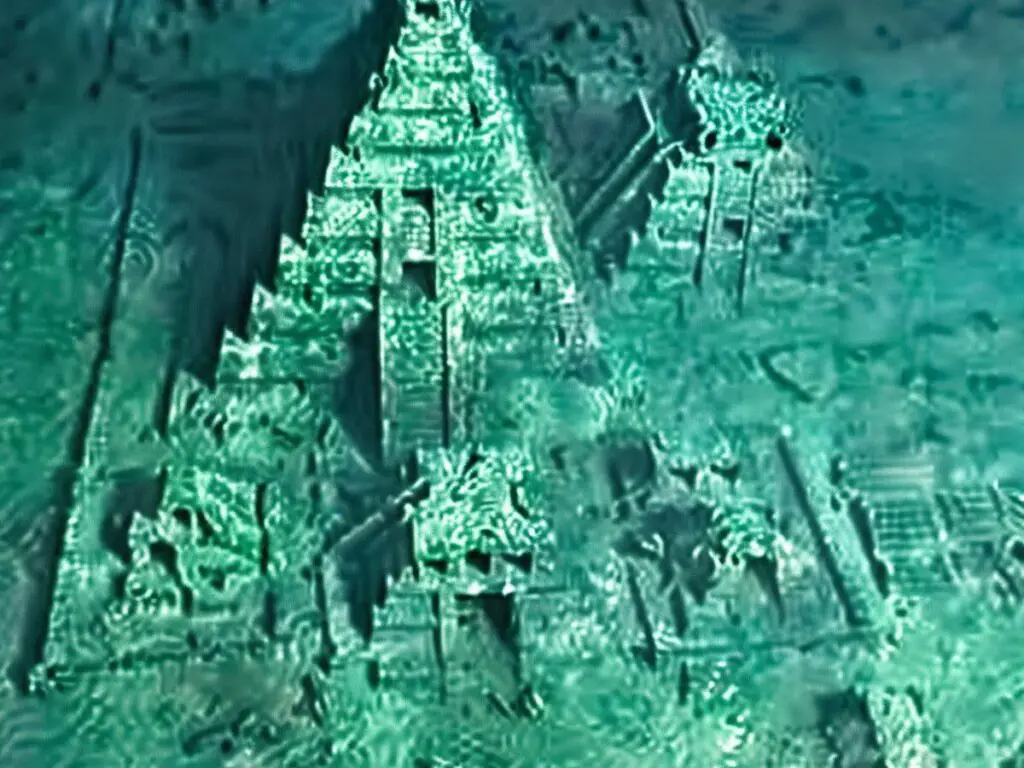
In 2001, marine engineer Paulina Zelitsky and her team made an astonishing discovery off Cuba’s western coast: submerged stone formations nearly 2,200 feet below the ocean’s surface. Using advanced sonar, they found structures resembling pyramids, roads, and other geometric shapes spread across several square miles. Some researchers theorize this could be the remnants of a lost civilization, possibly predating recorded history by tens of thousands of years.
The extreme depth of the site has made exploration challenging, and its origins remain hotly debated. Could it have been a city submerged by rising sea levels during the last Ice Age, or is it merely a geological formation? Adding to the intrigue, local legends speak of a sunken kingdom. Despite ongoing investigations, Cuba’s underwater city remains an enigmatic glimpse into a possible forgotten past.


